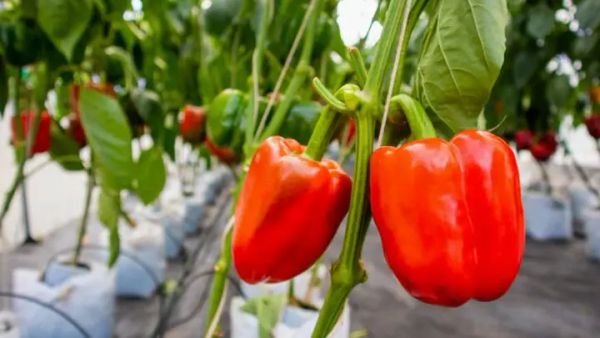Introduction
Are you an enthusiastic gardener looking to spice up your indoor gardening game? Growing peppers indoors can be a rewarding and flavorful experience, even if you’re a beginner. Whether you’re a city dweller with limited outdoor space or just want to enjoy fresh peppers year-round, this guide will provide you with 12 effective methods to ensure a bountiful indoor pepper harvest.
Choose the Right Pepper Varieties
Not all pepper varieties are suited for indoor cultivation. Opt for compact and dwarf varieties, such as jalapeños, Thai chilies, or bell peppers, as they adapt well to indoor conditions.
Provide Adequate Lighting
Peppers require plenty of light to thrive indoors. Invest in full-spectrum LED grow lights or fluorescent tubes to mimic natural sunlight. Ensure they receive 12-14 hours of light each day.
Maintain Proper Temperature
Peppers thrive in temperatures between 70-85°F (21-29°C). Avoid exposing them to extreme fluctuations and drafts.
Use High-Quality Potting Mix
Select a well-draining potting mix rich in organic matter. Peppers prefer slightly acidic soil with a pH of 6.0-6.8.
Choose the Right Containers
Opt for containers with good drainage holes to prevent waterlogged roots. Five-gallon pots are typically suitable for pepper plants.
Water Wisely
Overwatering can lead to root rot, so let the top inch of soil dry out before watering. Use a saucer to catch excess water and maintain humidity levels.
Fertilize Regularly
Pepper plants require regular feeding. Use a balanced, water-soluble fertilizer and follow the instructions on the label for optimal growth.
Prune and Pinch
Regularly prune and pinch back your pepper plants to encourage bushy growth and higher pepper yields. Remove any dead or yellowing leaves.
Pollinate Manually
Indoor peppers may not have access to outdoor pollinators. Gently shake the plants or use a small paintbrush to transfer pollen between flowers.
Support Your Plants
As your pepper plants grow, they may become top-heavy. Stake or use tomato cages to support the stems and prevent breakage.
Watch for Pests and Diseases
Keep a close eye on your pepper plants for signs of aphids, spider mites, or fungal infections. Act promptly with organic pest control methods if needed.
Harvest and Enjoy
Once your peppers reach the desired size and color, gently pluck them from the plant. Enjoy the fruits of your labor in your favorite dishes.
Conclusion
Growing peppers indoors can be a fun and rewarding endeavor for beginners. By following these 12 methods, you can create a thriving indoor pepper garden that yields fresh and flavorful peppers year-round. Experiment with different pepper varieties and enjoy the taste of your homegrown peppers in your culinary creations. Happy gardening!




